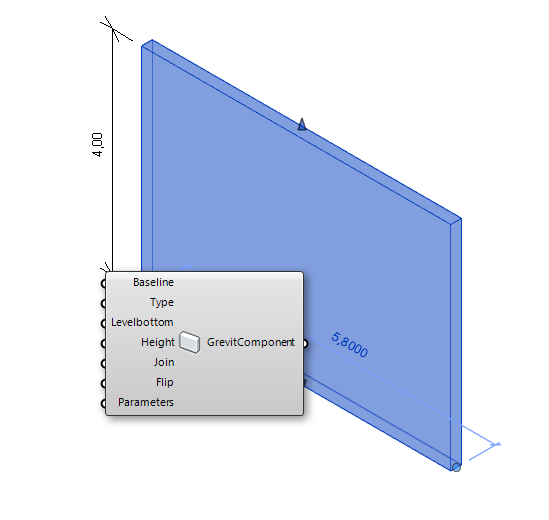Components
Extrusion Component
Creates a simple extruded massing object.
Required: Outline (Curve): a closed extrusion profile from curves. Vector (Vector): extrusion vector, mostly Z.

SetCurtainPanel Component
The SetCurtainPanel Component allows you to set the curtain panel type of a specified curtain panel. Identify your curtain panel ID using the “IDs of Selection tool” from the “Manage” palatte in Revit. Use this panel ID and the desired panel type name as inputs for the component.
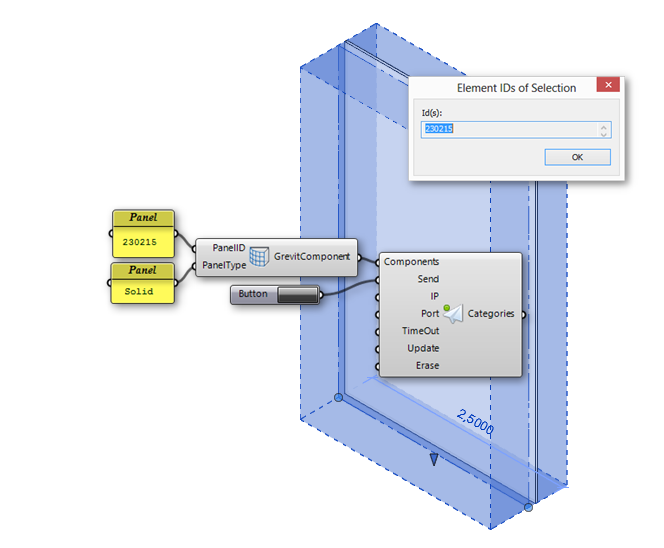
Filter Component
The Filter Component allows you to apply a filter to a defined View.

Send Component
The send component is the most important one. It wraps up all your Grevit components and sends them to your target application. Once sent, its output returns all Categories, Families and Types as Text of the Revit document. Required: Components (Grevit Components): all your components as a item, list or tree. But make sure you flattened the input. Send (Boolean): place a simple button here to initiate sending. Optional: IP (Text): ip of the receiving application, default is localhost. Port (Number): port of the receiving application, default 8002 TimeOut (Number): if you are sending large models a higher timout vale might be helpful. Update (Boolean): activates the update mode. Erase (Boolean): is already obsolete.
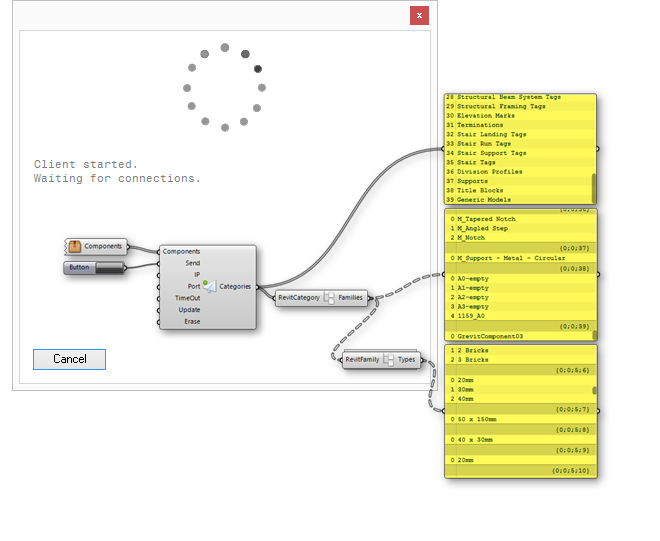
Structual Types
Grevit comes with a set of structural type components. They can be used to set the structural type of a family if necessary.

Adaptive Component
The adaptive component can be used to create adaptive components. If you want to learn how to use them you might want to watch one of the video tutorials:
Required: Points (Points): the points to place the adaptive component on. Family (Text): name of the adaptive family Type (Text): name of the type
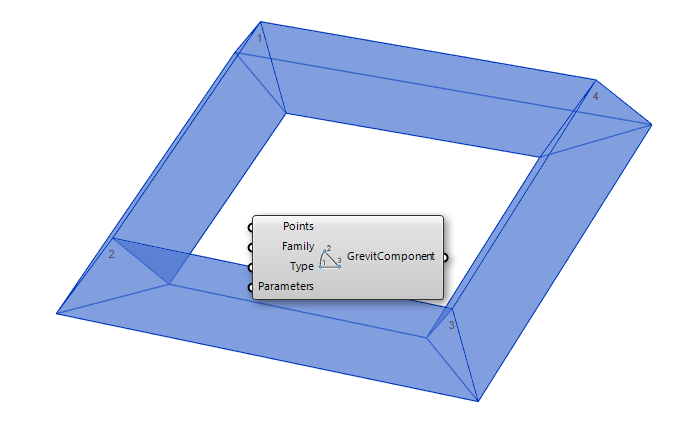
Family Component
The family component creates any family. It can be used to create normal or view based families. Required: Points (Points): one or two placement points Family (Text): name of the family Type (Text): name of the type Optional: View (Text): name of the view if its a view based component Level (Text): name of the level to place the family Host (Any Grevit Component): reference object, for example: a wall if the family is a door or window StructuralType (Structural Component): structural type of the family The picture describes how to use the host component if you want to place a door or a window.
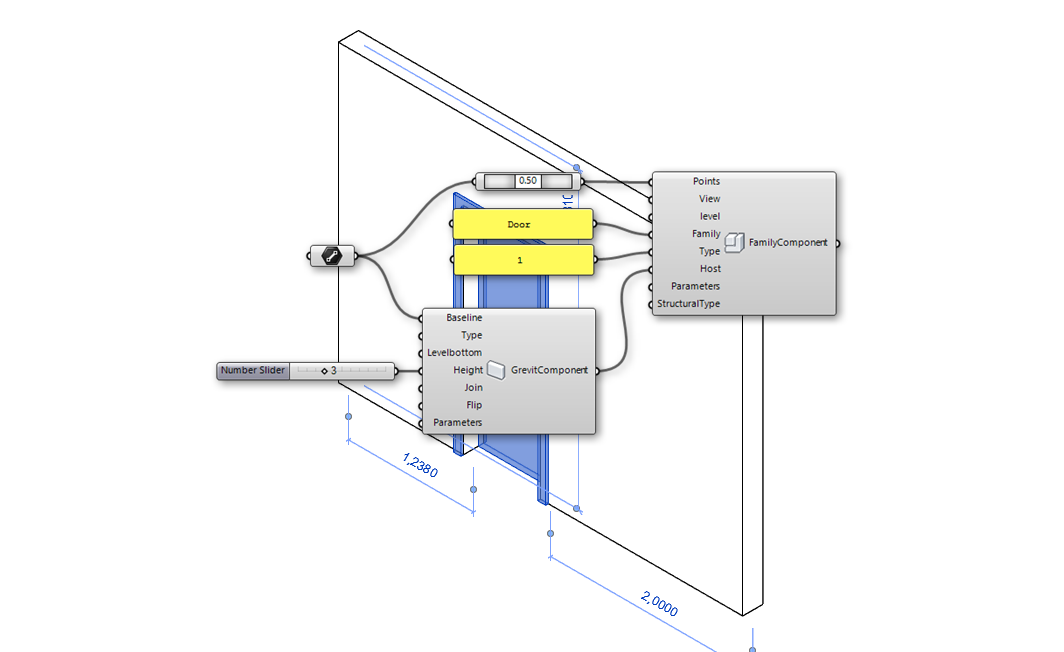
Room Component
The room component creates a room without a location. It will appear in the list of unplaced rooms. This can be helpful if you have to place a large number of rooms. Required: Name (Text): name of the room Number (Text): number of the room Phase (Text): name of the phase

Topography Component
The topography component creates a topo surface object from points. Required: Points (Points): Topography coordinates (X,Y,Z)

Reference Plane Component
The reference plane component creates a reference plane from a surface. Required: Name (Text): name of the reference plane Plane (Surface): surface of the reference plane Optional: View (Text): view to show reference plane in

Level Component
The level component creates a level on a certain height. Keep in mind that there should only be one instance of each level – don’t send it twice. Required: Name (Text): name of the level Elevation (Number): absolute level elevation View (Boolean): create a view with it?

Text Component
The Text component creates a text label in a defined view.
Required:
Text (Text): text to write
Location (Point): basepoint of the text
View (Text): name of the view to place it on
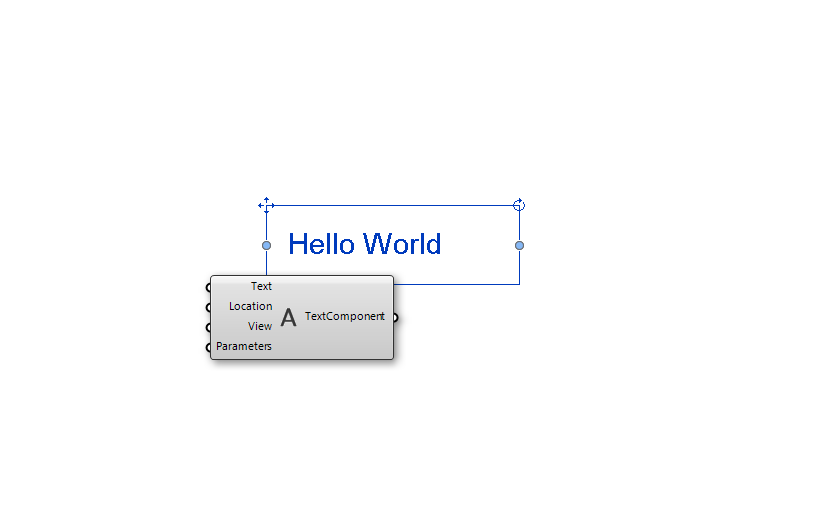
Line Component
The line component creates curves from curves. Required: Curve (Curve): the curve. Optional: isModelLine (Boolean): create a model line isDetailLine (Boolean): create a detail line in the active view isRoomBoundary (Boolean): create a room boundary line Make sure your are setting at least one of them true in order to create something.

Hatch Component
The hatch component creates a hatch in a defined view. Required: Points (Points): outline points of the hatch. View (Text): name of the view. Optional: Pattern (Text): name of the fill pattern.

Gridline Component
The gridline component can be used to create gridlines from curves. Required: Gridline (Curve): line fo the grid Optional: Name (Text): name of the gridline
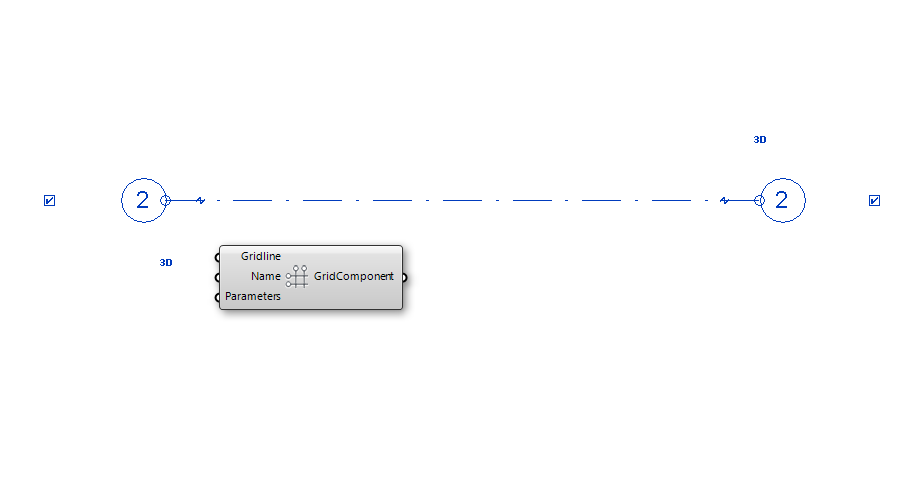
Column Component
The column component creates a column from a bottom to a top point. There is no need for the points to be on top of each other – the column can be slanted. Required: PointTop (Point): tip of the column PointBottom (Point): bottom of the column Optional: Family (Text): name of the family Type (Text): name of the type Level (Text): name of the level
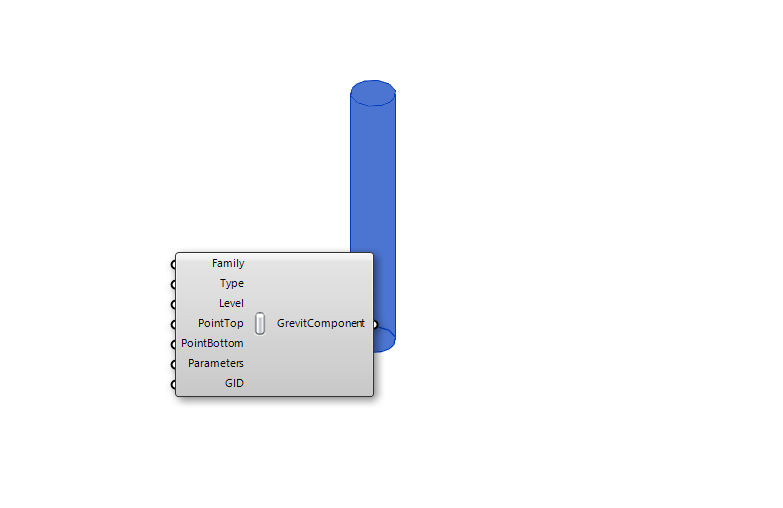
Floor Component
The floor component creates a slab or floor from a surface. There is no direct Type input, if you wish to set the floor type in grasshopper use the method shown in the picture below:
Required: Surface (Surface): surface to create slab from. Levelbottom (Text): name of the level. Optional: SlopeTopPoint (Point): top point of the slope arrow. SlopeBottomPoint (Point): bottom point of the slope arrow. Slope (Number): value of slope. Structural (Boolean): sets the slab as a structural object.
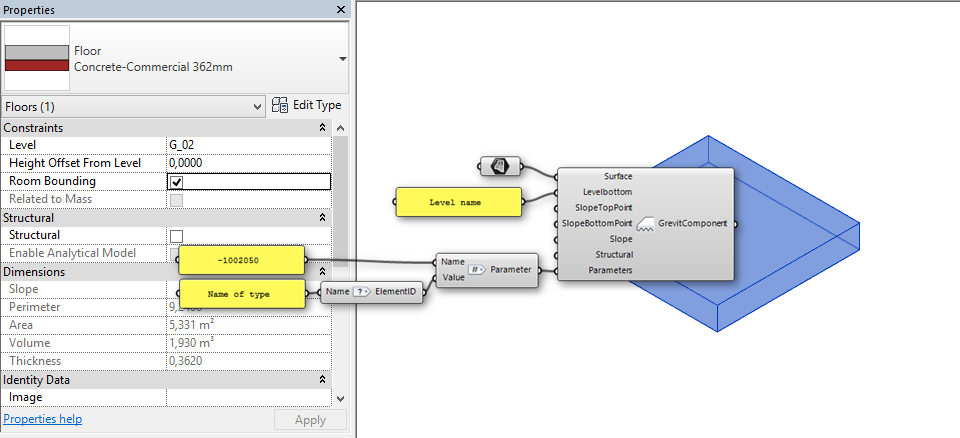
Profile Based Wall Component
The profile based wall component creates a wall from a curve profile. Required: Profile (Curves): closed profile of curves in XZ Space Optional: Type (text): name of the wall type. Level (text): name of the level.
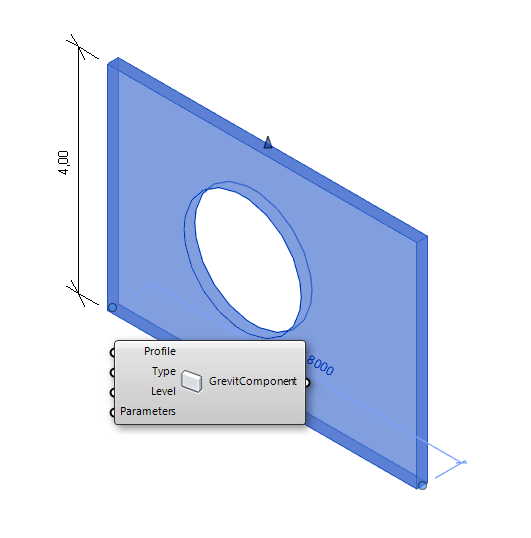
Wall Component
The wall component creates a curve based wall. Required: Baseline (Curve): can be any curve. Height (Number): The height of the wall. Optional: WallType (text): name of the Revit wall type LevelBottom (text): level name where to place the wall Join (boolean): avoids auto joining of walls Flip (boolean): flips the wall after creating it
